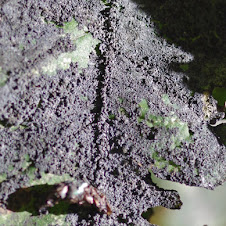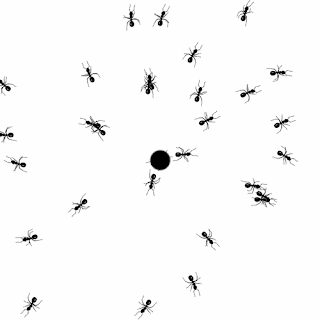Wooly Aphids, like
all aphids, are one of the first insects to get moving in earnest in the
spring. And,
like virtually every other creature in spring, they have a
specific reproductive agenda at hand. Wooly aphids use two host trees/plants in
their life cycle. They choose one to overwinter and lay eggs in, but when
spring comes they move to another to establish a breeding colony. The nymphs
that appear in spring are crawlers, but by late spring they will be a
full-blown white fuzzy mass on spurs and branches. Throughout the summer,
subsequent generations take flight to find their own spots and, as winter
approaches, all the Wooly Aphids go in search of their winter homes. This
is often when people first notice them.
Wednesday, April 7, 2021
What’s This Bug? The Wooly Aphid.
If you see drifting bits of white fuzz in your garden, you might not pay much attention to them, or you might discount them as pollen, lint, or even little fairies. But you may want to pay a little closer attention because they could be Wooly Aphids (Mult spp) hidden as innocuous debris.
The distinctive white fuzziness of these insects isn’t hair or fur – it’s the result of waxy strands that they secrete that create the wooly effect. It is believed that this wool is meant to protect them and deter predators. Underneath all that adornment they are small (about ¼” diameter), pale green to purplish-brown aphids. When they cluster together, they look more like a fungal growth than individual insects. If you see a white mass and are unsure of what it is, give the area a little shake – if it’s aphids, they’ll move. In fact, there is one species that does a dance when they feel threatened; they raise their rear ends and wiggle them. See them do their thing in this video, it’s pretty entertaining.
The biggest concern in regards to Wooly Aphids is Sooty Mold. This particular plant mold is caused by an accumulation of honeydew, the sticky-sweet excrement of aphids. When aphids gather in large numbers, the honeydew can really build up creating the perfect growing environment for mold. Sooty Mold seldom kills a plant outright, but it can weaken it to the point where the insects causing the honeydew can do real damage. And then there is the ant angle – where there is honeydew there will be ants. They love the stuff and will protect and farm the aphids to get their honeydew (here is a cool super-closeup
video that shows them milking the aphids). Ants are notorious vectors for some serious plant diseases, so their presence on any plant or tree is definitely undesirable. Too much honeydew is not only a problem for plants, it can drip onto surfaces and is a real pain to get off cars.
If you are not charmed by the fluff-balls that are Wooly Aphids, ARBICO Organic has a multitude of weapons you can deploy against them. We have everything from insects that prey on aphids, to sticky traps, to a large variety of organic and natural insecticides. Our Aphid Control page is the best first stop on your search for a solution to your aphid problem.
Take Care.
Submitted by Pam
Subscribe to:
Post Comments (Atom)
Featured Post
Being Thankful at ARBICO
Here at ARBICO Organics we have a lot to be proud of – and thankful for. We are a small, family-owned company that has grown and prospered t...

-
Entomopathogenic Nematodes Ever heard of a NEMATODE? You might be more familiar with their colloquial name, which is roundworm. For the p...
-
I recently had a knee injury and was ordered to stay off it for a couple of weeks. During my forced vacation, I spent most of my time on th...
-
Our ARBICO Organics Beneficial Nematodes are one of our most popular and most effective controls for a wide-range of insect pests. These ...









Thank you, awesome!
ReplyDelete